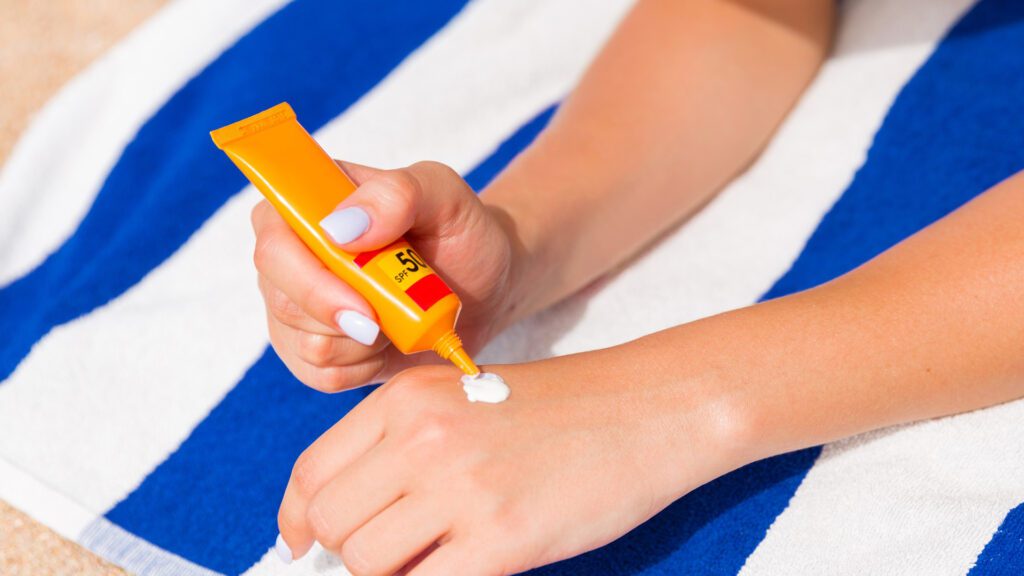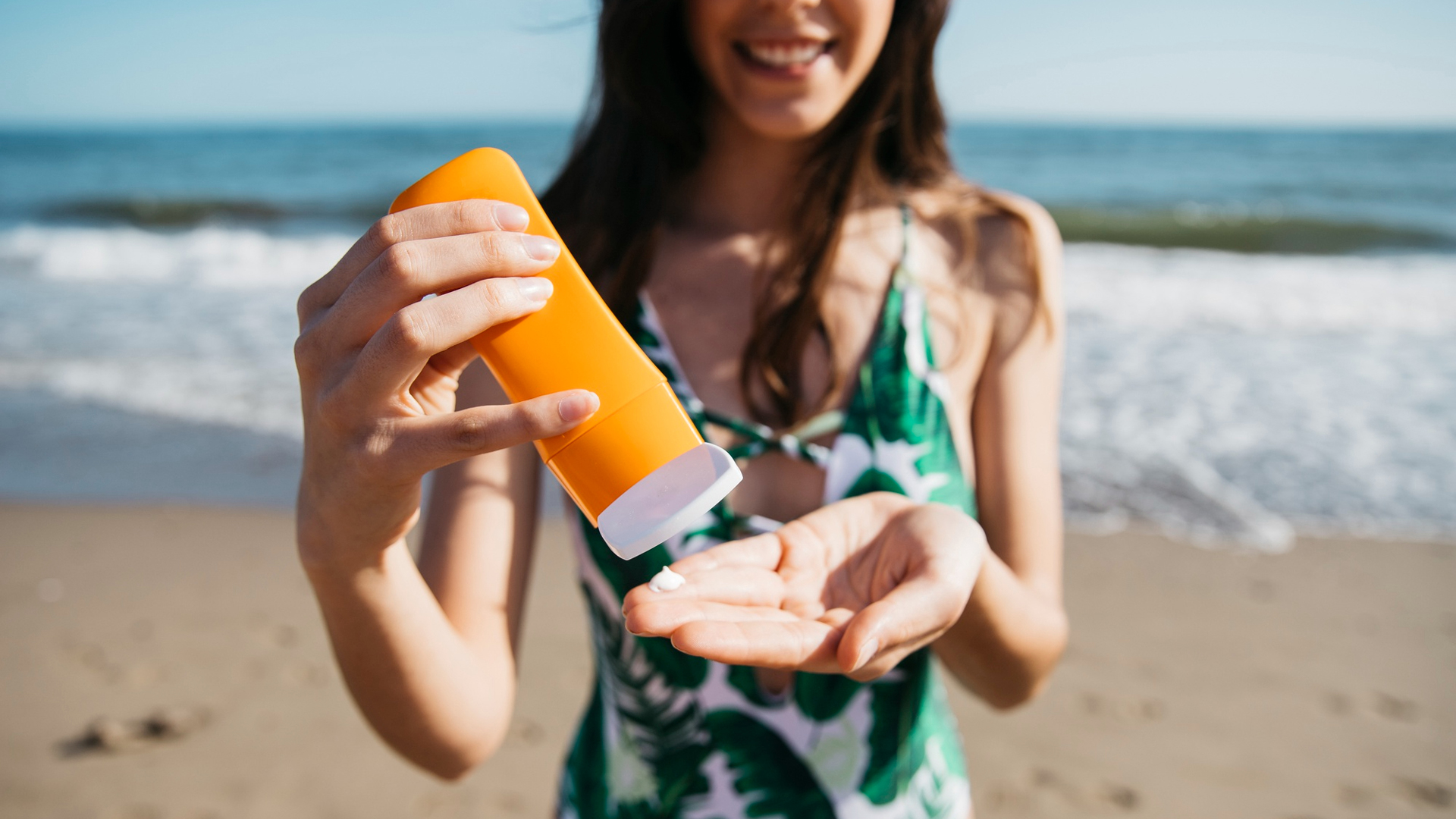Do you think sunscreen stops you from getting a tan? Well, it’s time to learn the truth.
Importance of Sunscreen in Protecting Your Skin
Sunscreen is recommended to protect your skin from UVA and UVB rays that can damage your skin’s health. It prevents sunburn, premature aging, and reduces the risk of skin cancer.
Depending on the SPF, usage, and brand, this shield may or may not be effective against tanning.
Can You Tan With Sunscreen?
Yes, you can still tan with sunscreen! Many people think sunscreen prevents tanning, but that’s not true. Sunscreen protects your skin from harmful UV rays while still allowing some sun exposure.
When I use sunscreen, I choose a broad-spectrum sunscreen with at least SPF 30. This way, I get protection from UVA rays. I’ve noticed that I can still get a slight tan without burning.
But it’s important to reapply sunscreen every two hours and apply it generously, especially if you’re swimming or sweating. Remember, the goal is to protect your skin while enjoying the sun.
How Does Sunscreen Work?
Sunscreen works by blocking harmful UV rays to protect your skin. There are two main types: chemical and physical (or mineral) sunscreens.
Chemical sunscreens absorb UV radiation from the sun. They contain organic compounds like avobenzone or octisalate, which convert UV rays into heat and release them from the skin.
While physical sunscreens sit on top of the skin, they contain minerals like zinc oxide or titanium dioxide. These ingredients reflect and scatter UV rays away from your skin.
5 Negative Side Effects of Tanning With Sun

According to the Skin Cancer Foundation, melanin produced by skin cells can be harmful in various ways, such as:
Skin Damage: Tanning increases the risk of skin damage, leading to premature aging, wrinkles, and a leathery texture.
Sunburn: Overexposure to UV rays can cause painful sunburns, resulting in redness, peeling, and discomfort.
Skin Cancer: Prolonged tanning significantly raises the risk of developing skin cancers, including melanoma, squamous cell carcinoma, and basal cell carcinoma.
Hyperpigmentation: Tanning can lead to uneven skin tone and dark spots, known as hyperpigmentation, which can be difficult to treat.
Eye Damage: UV exposure can harm your eyes and lead to vision problems.
Can You Still Get a Tan With SPF 50?
No normal or tinted sunscreen can block 100 % of UV rays, but sunscreen with SPF 30 or higher can delay the tanning process and prevent sun damage. SPF 50 blocks 98 % of UVB rays, the main culprits for sunburn and tanning.
But remember, sunscreen acts as a barrier between your skin and the sun’s harmful rays.
5 Pros and Cons of SPF
|
Pros |
Cons |
|
Protected skin |
Fragranced |
|
Prevents anti-aging, wrinkles, and skin cancer |
Costly |
|
Low melanin production |
Greasy |
|
Natural and healthy tan |
Allergic reactions to chemicals |
|
Long-term skin benefits |
Clog pores |
How To Choose The Best Sunscreen For Sun Protection
It’s still possible to tan while wearing sunscreen, but how do you choose the best sunscreen to minimize its effects? Here’s what the experts suggest:

SPF Level
Look for a sunscreen with at least SPF 30. This blocks about 97% of UVB rays. Higher SPF offers slightly more protection, but no sunscreen can block 100% of rays.
Broad-Spectrum Protection
Only apply sunscreen that is labeled “broad-spectrum.” This means it protects against both UVA and UVB rays.
Water Resistant
If you plan to swim or sweat, choose water-resistant sunscreen. Check if it lasts 40 or 80 minutes. Reapply regularly, especially after swimming.
Ingredients
You can choose between chemical and physical (mineral) sunscreens. Chemical sunscreens absorb UV rays and may cause irritation for some people.
Skin Type
Consider your skin type when selecting a formula. If you have oily or acne-prone skin, look for non-comedogenic options. For sensitive skin, fragrance-free or hypoallergenic products are usually better.
Note: Using a broad-spectrum sunscreen won’t protect you in tanning beds as they are extremely dangerous and are not recommended by experts.
Avoid UV Rays By Wearing Sunscreen Correctly
Experts recommend wearing sunscreen every day but with the correct application of spf level.
Use a nickel-sized sunscreen for your face and about an ounce for your body.
Make sure to apply sunscreen 15-30 minutes before heading outside. This helps sunscreen absorb better in your skin.
It’s still possible to get tanned, so reapply the sunscreen after two to three hours for maximum protection.
Thoroughly massage the sunscreen on your neck, ears, and feet to avoid sunburns.
Alternate Ways To Prevent Tanning While Wearing Sunscreen
Prevent tanning by choosing clothing that shields your skin. Long sleeves, hats, and UV-protective fabrics are perfect solutions. If you love that golden tan, you can also use safe tanning lotions or creams.
When outdoors, always wear sunscreen of spf 40. Find a shady spot, especially during peak sun hours (10 AM to 4 PM), and drink plenty of water. Hydrated skin looks better and is more resilient against sun damage.

